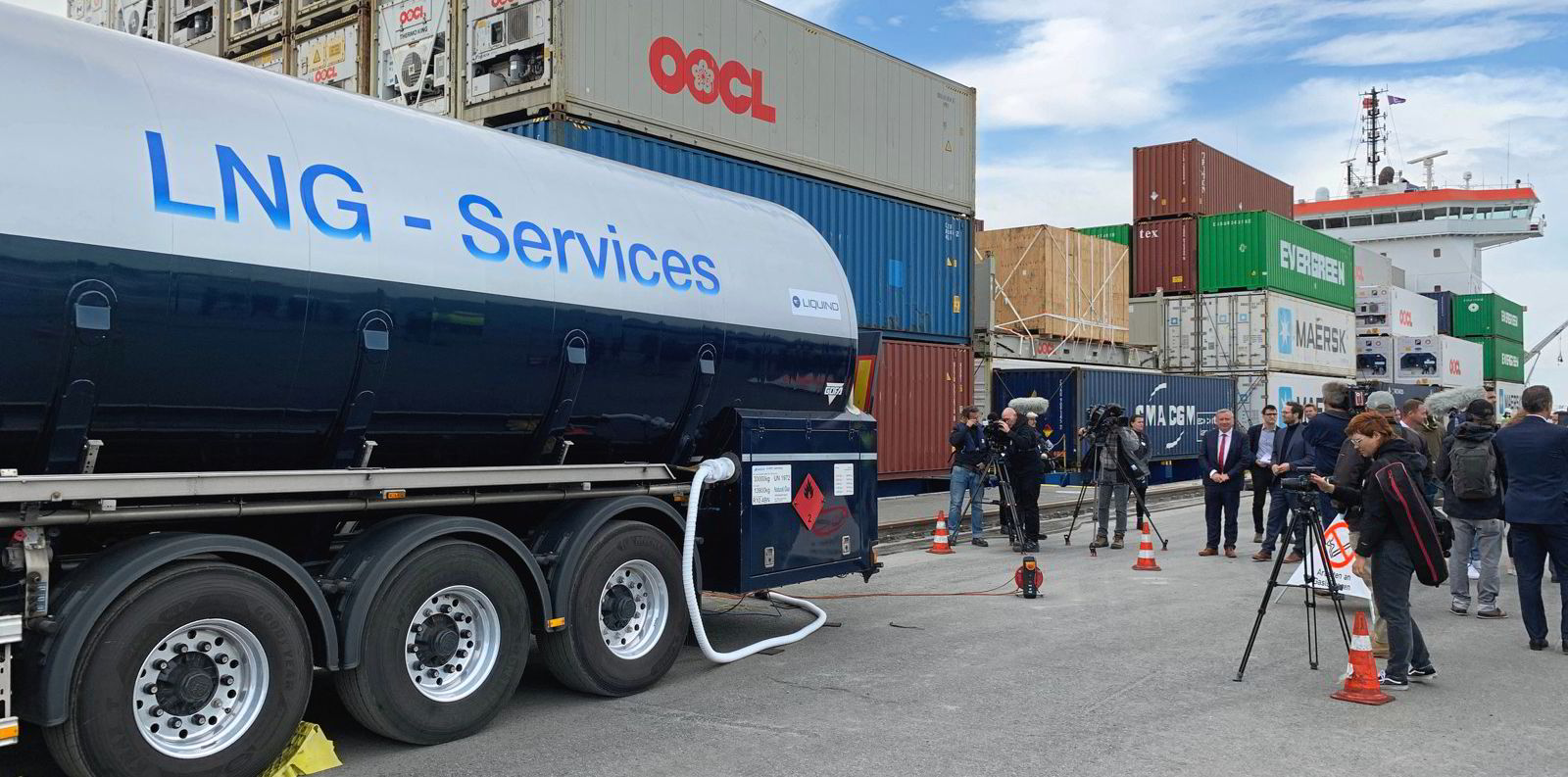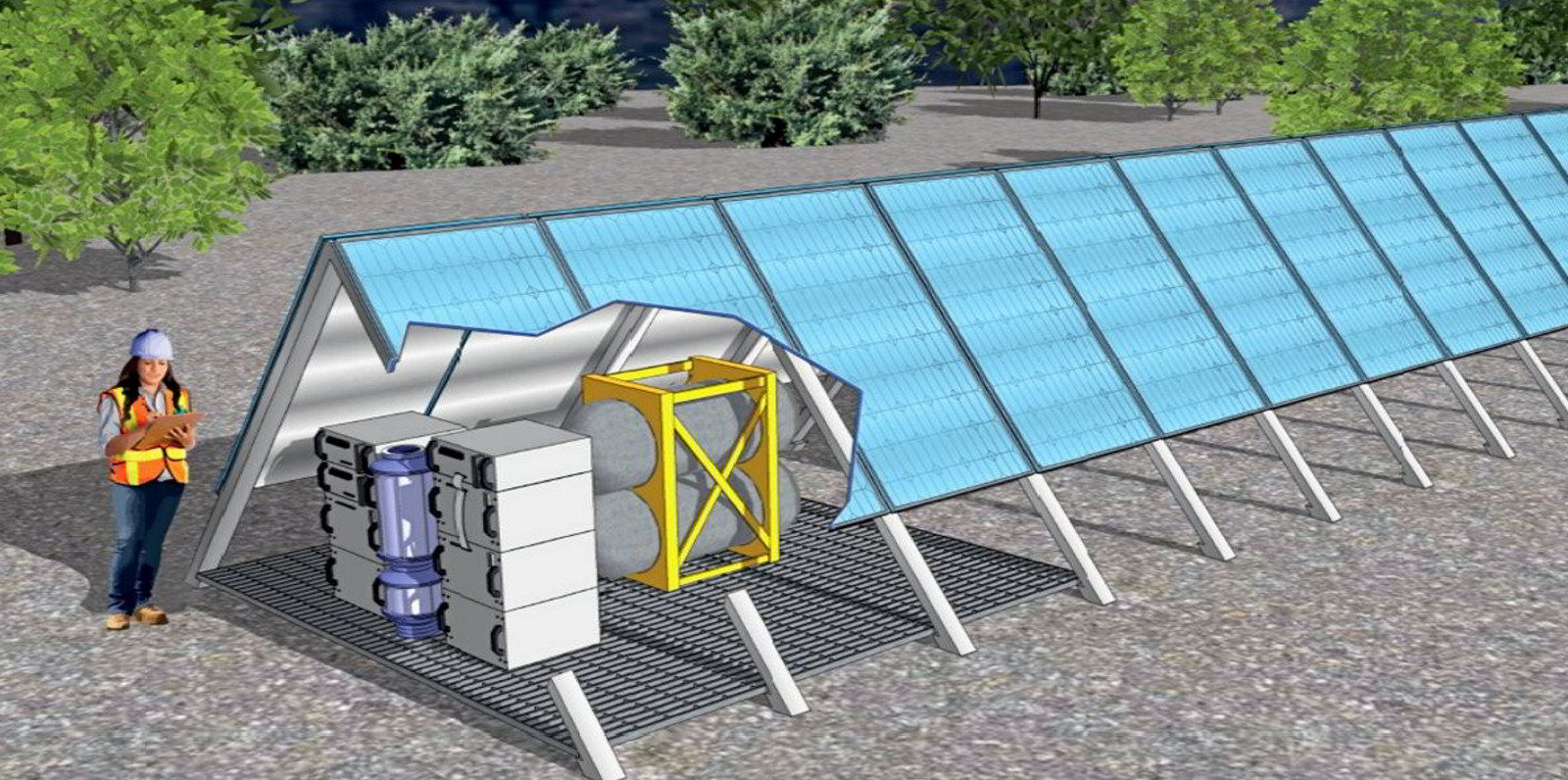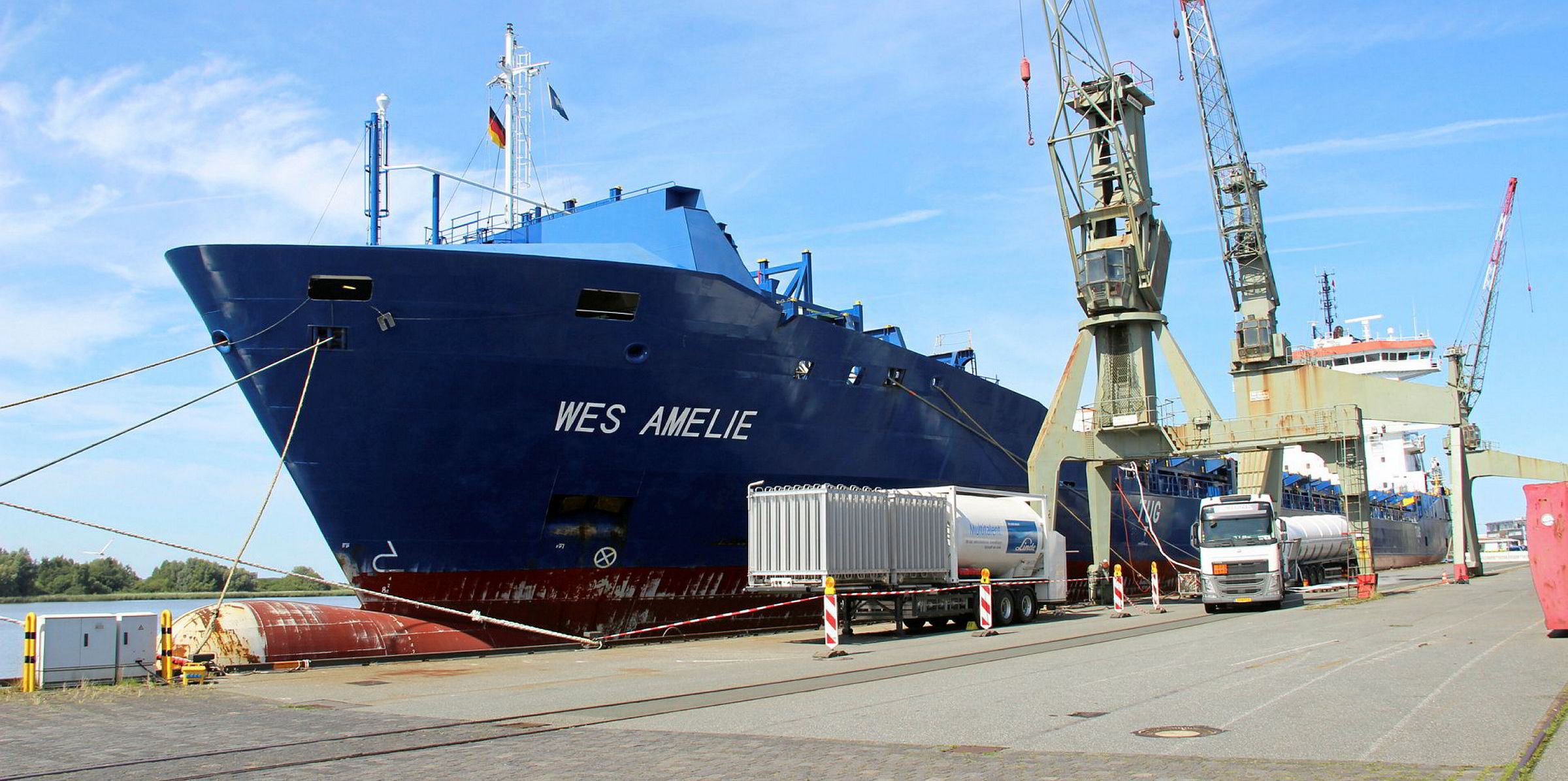The first bunkering of a vessel with synthetic LNG (S-LNG) has been carried out in Germany.
In the pioneering operation, Elbdeich Reederei's 1,036-teu feeder containership ElbBlue (ex-Wes Amelie, built 2011) was bunkered with 20 tonnes of S-LNG. Also referred to as synthetic natural gas (SNG), the fuel was delivered by gas-fuelled truck in Brunsbuttel.
As a result of adding the S-LNG volumes to the ship's 120 tonnes of bunkers, the Unifeeder-chartered vessel, which operates in the North Sea and Baltic Sea, will see a drop in its CO2 emissions for its next voyage of 56 tonnes.
S-LNG is produced by generating electricity from low-carbon or renewable sources to conduct electrolysis — effectively splitting water into hydrogen and oxygen. CO2 is added, creating methane and water. The synthetic methane can then be liquefied to produce marine bunkers.
The S-LNG loaded at Brunsbuttel was produced in a power-to-gas facility in Werlte, Germany, owned by kiwi AG. The plant is the world’s first multi-megawatt installation to generate synthetic natural gas from CO2 and renewable electricity.
Industry first
MAN Energy Solutions, which hosted the ceremony to mark the bunkering, retrofitted the boxship's main engine in 2017 to enable it to run as a dual-fuel vessel in what the company said was the first such conversion of its type globally.
The engine designer said it was the first time the synthetic fuel — generated from 100% renewable energy via power-to-X technology — has been employed in commercial shipping.
This has been a long-running project which has been delayed by the global pandemic and the sale of the vessel.
MAN PrimeServ Augsburg senior vice president Stefan Eefting, who has been involved in the project since the retrofit under the ship's previous ownership with Wessels Marine, said the bunkering is a crucial step in shipping's decarbonisation.
"In reducing or even eliminating future emissions generated by the global supply-chain, synthetic fuels and engine retrofits have a crucial role to play," Eefting said.
He said a retrofit can immediately reduce a ship's emissions levels, but using synthetic LNG can enable carbon-neutral operation.
Power-to-X is a number of electricity conversion, energy storage, and reconversion pathways that use surplus electric power, typically during periods where fluctuating, renewable-energy generation exceeds load.
This type of conversion technology allows for the decoupling of power from the electricity sector for use in other sectors.
Eefting added: "Today, we are demonstrating that any LNG-retrofitted ship can also run on fuels generated by power-to-X technology, and even as a mix of fuels depending on availability."
Hurdles
But cost and availability remain key hurdles in making S-LNG available as a marine fuel.
In 2020, Eefting said S-LNG would be around eight to 10 times as expensive as LNG. But he said it could be just three times higher if correctly scaled up, adding that it could be widely available in 10 years.
MAN Energy Solutions chief sales officer Wayne Jones told TradeWinds that the Brunsbuttel bunkering is all about proof of concept to show that the technology is there and is workable.
He said that while the ElbBlue bunkering is a one-off, regulatory bodies and the industry need to embrace that this is possible and join together to make it happen.
Jones said governments need to "establish a framework to make synthetic fuels readily available, while power-to-X needs to be developed on an industrial scale in order to bring down costs and make truly sustainable fuels a reality".







